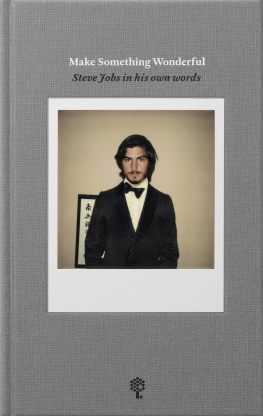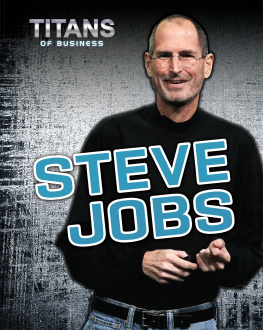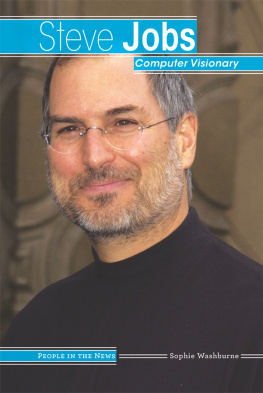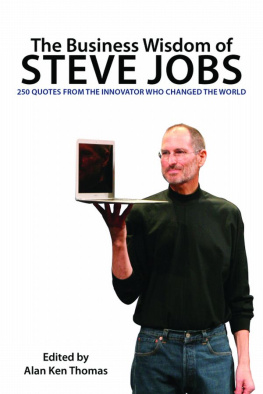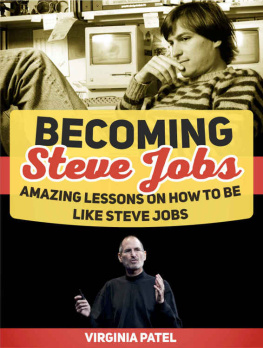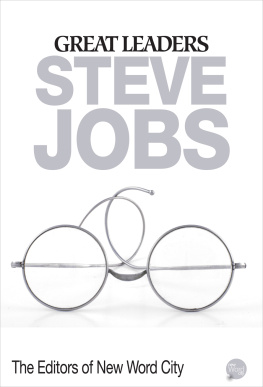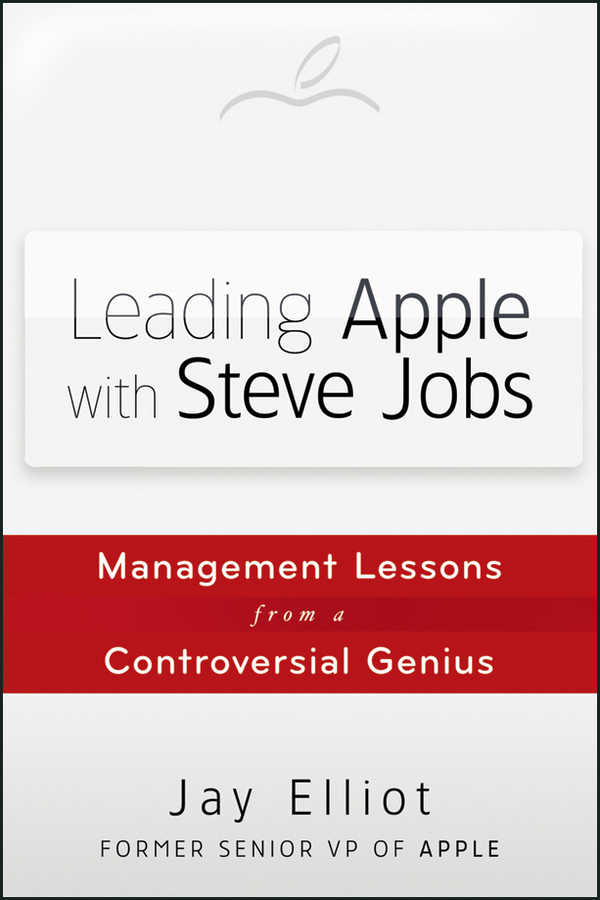Contents

Cover image: Paul McCarthy
Cover design: Paul McCarthy
Copyright 2012 by Jay Elliot. All rights reserved.
Published by John Wiley & Sons, Inc., Hoboken, New Jersey.
Published simultaneously in Canada.
No part of this publication may be reproduced, stored in a retrieval system, or transmitted in any form or by any means, electronic, mechanical, photocopying, recording, scanning, or otherwise, except as permitted under Section 107 or 108 of the 1976 United States Copyright Act, without either the prior written permission of the Publisher, or authorization through payment of the appropriate per-copy fee to the Copyright Clearance Center, Inc., 222 Rosewood Drive, Danvers, MA 01923, (978) 7508400, fax (978) 6468600, or on the web at www.copyright.com . Requests to the Publisher for permission should be addressed to the Permissions Department, John Wiley & Sons, Inc., 111 River Street, Hoboken, NJ 07030, (201) 7486011, fax (201) 7486008, or online at http://www.wiley.com/go/permissions .
Limit of Liability/Disclaimer of Warranty: While the publisher and author have used their best efforts in preparing this book, they make no representations or warranties with respect to the accuracy or completeness of the contents of this book and specifically disclaim any implied warranties of merchantability or fitness for a particular purpose. No warranty may be created or extended by sales representatives or written sales materials. The advice and strategies contained herein may not be suitable for your situation. You should consult with a professional where appropriate. Neither the publisher nor author shall be liable for any loss of profit or any other commercial damages, including but not limited to special, incidental, consequential, or other damages.
For general information on our other products and services or for technical support, please contact our Customer Care Department within the United States at (800) 7622974, outside the United States at (317) 5723993 or fax (317) 5724002.
Wiley publishes in a variety of print and electronic formats and by print-on-demand. Some material included with standard print versions of this book may not be included in e-books or in print-on-demand. If this book refers to media such as a CD or DVD that is not included in the version you purchased, you may download this material at http://booksupport.wiley.com . For more information about Wiley products, visit www.wiley.com .
ISBN 978-1-118-37952-3 (cloth); ISBN 978-1-118-43136-8 (ebk); ISBN 978-1-118-43142-9 (ebk); ISBN 978-1-118-43141-2 (ebk)
For my wife, Liliana, and my sons, Jay-Alexander, Federico, and Scott, for their tolerance of the time I spent on this book .
And in memory of Dr. Arynne Simon, the best coach I ever had .
Preface
Why I Wrote This Book
Like many others, I remember exactly what I was doing when I heard the news of Steve Jobs passing. A friend of mine called on my cell phone as I was driving my 15-year-old son home from high school. He said, Did you hear the news? Steve just died.
Immediately afterward, my phone rang again. This time it was a San Francisco radio station, wanting to interview me. I did the interview, but could hardly make it through. I was breaking up. After the call, I started sobbing and had to pull over to let my son drive. I hadnt cried since my mother died.
I started thinking about first meeting Steve, this hippie-like guy who struck up a conversation with me in a restaurant and a few minutes later wanted me to be his vice president of human resources at Apple and, at the same time, a member of the original Mac development team. I remembered being almost overwhelmed trying to keep up with Steve while helping him run Apple. Observing Steve close up changed my entire outlook on how to run a business and how to energize people to their highest level of creativity.
In my previous book, The Steve Jobs Way , I outlined the powerful leadership skills Steve had and developed along the way at Apple, NeXT, Pixar, and back at Apple, and, just as important, his ability to bounce back from the major failures. That book, published in the United States and in 27 foreign countries, led to hundreds of responses and inquiries from around the world for more information. Those requests led to the decision to write this book, focused on the how-to management lessons drawn from my observations of Steve Jobs day-by-day leadership. I want to share my experience of Steves basic strategies for leading his teams, and the things that made them so incredibly innovative . Shortly after my first book was published, Walter Isaacsons biography of Steve appeared. Though it was widely acclaimed and authorized by Steve, I found it unfairly negative and critical of himand it misreported many events that I witnessed firsthand. I wasnt the only person who had this reaction. Bill Campbell, a former Apple vice president, longtime board member, and personal friend of Steves, had harsh words for what he referred to as that damn book. He criticized it for focusing far too much on the negative aspects of how Steve dealt with people. Steve has been widely accused of being insufferable while also acknowledged as a brilliant and motivational leader. Though of course he had flaws, Isaacsons Steve is not the Steve I knew.
Its true that one of my roles at Apple was to be the adult in the room and manage the fallout from the occasional mess Steve would create. Yet, on the whole, I think most people who worked for him, including me, would say they did the best work of their lives for him and dont regret the experience a bit. Not only that, but Ive used the leadership lessons I learned from Steve throughout my career. The purpose of this book is to help you do the same.
There are two other important ways that this book is different from almost all the other Steve Jobs/Apple books out there. I tell a lot of stories about watching Steve in action at Apple, not as a journalist relying on the reports and opinions of others, but from the perspective of being there. This is a book about leadership, management, and innovation based on my personal experience as VP of human resources and then as senior VP of Apple. None of the other books Ive read about Steve and Apple were written by people who were actually there, working side-by-side with him and helping him formulate his tactics for organizing teams and inspiring people to become even more creative and innovative.
When I worked at Apple, Steve was still in his 20s, and I was hired in part because Steve wanted a graybeard around. Because of my age and experience, and because of the knowledge from my years in management at IBM and Intel, I was the only person over 40 whose business opinions and advice he really trusted on a daily basis. He looked to me as both a mentor and as a guide. And yet, despite the fact that I was older and much more experienced in business, I found it incredibly inspiring to work with him. We were both motivated not by the money but by the goal of changing the world.
In these pages you will find practical examples that show how Steves leadership principles can be used in the everyday worlds of business, of product development, and of recruiting and managing people. Ive also added a special emphasis on his techniques for inspiring innovation.
Even though its true Steve was a unique, charismatic leader and that he had flaws, there is a great deal that the average manager or leader can learn from his style and approach to motivating people, pursuing excellence, and assembling and leading innovative teams. I hope this book will help you inspire your people to do the best work of their lives.


